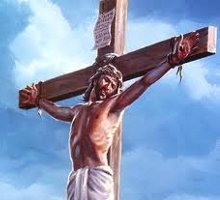The Holy Week Of Filipinos
 Today is Good Friday, the Friday of Holy Week when the Christians commemorate the crucifixion and death of Jesus. Unlike the days when I post about my usual topics on technology, business and other matters, I will now talk about Holy Week, a significant religious festival in the Philippines. In our predominantly Roman Catholic country, Holy Week is known as both Semana Santa (the original Spanish name) or by the Filipino name Mahál na Araw (literally translated to English as “Precious Days”).
Today is Good Friday, the Friday of Holy Week when the Christians commemorate the crucifixion and death of Jesus. Unlike the days when I post about my usual topics on technology, business and other matters, I will now talk about Holy Week, a significant religious festival in the Philippines. In our predominantly Roman Catholic country, Holy Week is known as both Semana Santa (the original Spanish name) or by the Filipino name Mahál na Araw (literally translated to English as “Precious Days”).
Beginning Holy Thursday, businesses in the Philippines shut down operations until Easter Sunday. During these days, Thursday, Friday and Saturday, many local television and radio stations interrupt broadcast or at least replace regular programming with more solemn or religious content out of respect.
Many communities observe the Spanish-influenced Catholic rituals such as sermons and processions but it is the Pabasa ng Pasyon (Reading of the Passion) that really reminds me of the importance of the celebration. Called “Pabasa” for short, this long-time tradition is said to have begun also during Spanish time. The Pabasa is a ritual wherein the life and passion of Christ is chanted a capella (unaccompanied vocal music). Groups of singers usually take turns in doing the Pabasa while devotees gather around them to listen and reflect.
In some parts of the Philippines, Holy Week has become a tourist attraction with multiple crucifixions and a great number of flagellants. The week-long spectacle draws thousands of participants as well as interested local and foreign spectators. While the Catholic Church does not recognize the ceremonies, these so-called religious practices have been going on for generations and became part of the Holy Week of Filipinos.




Latest Feedbacks